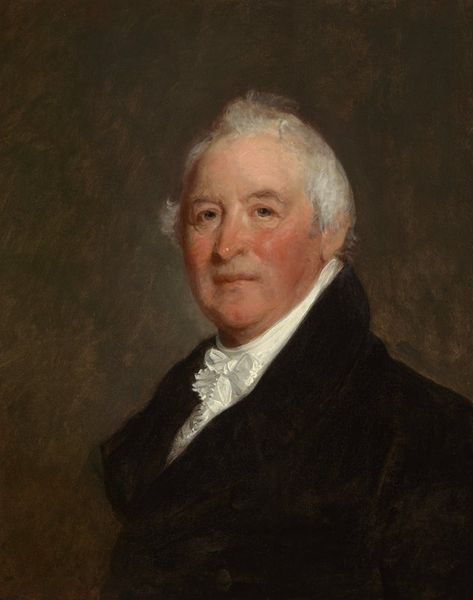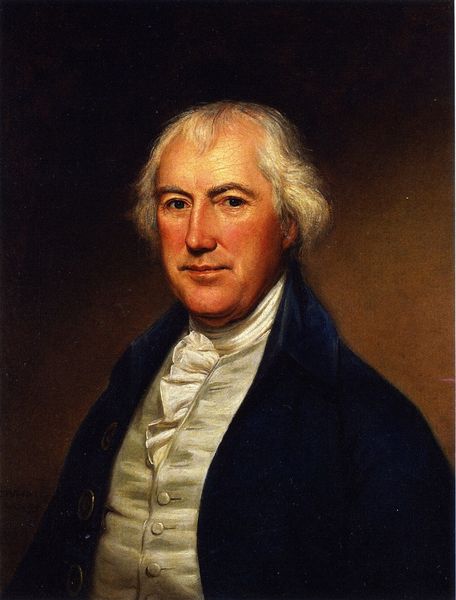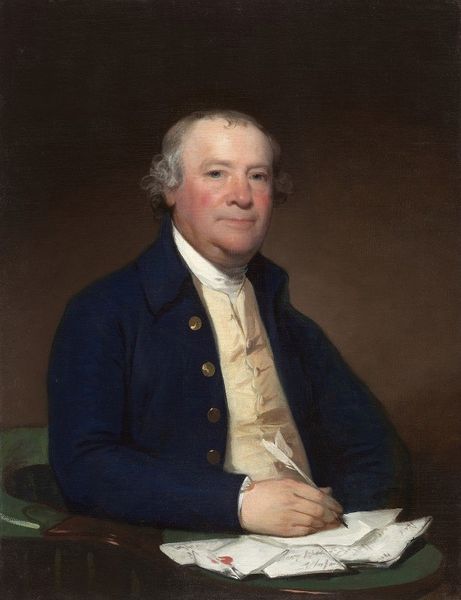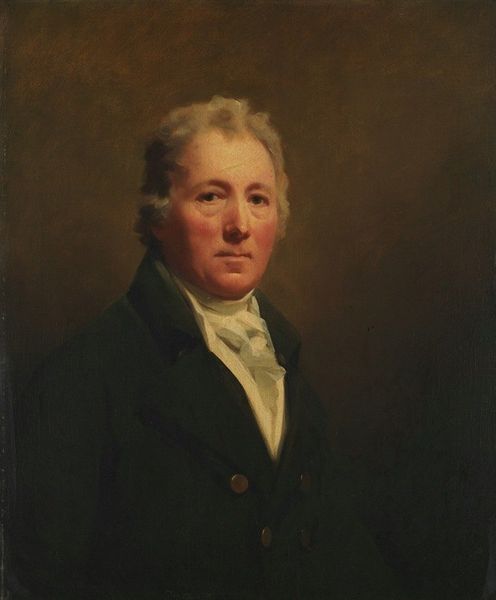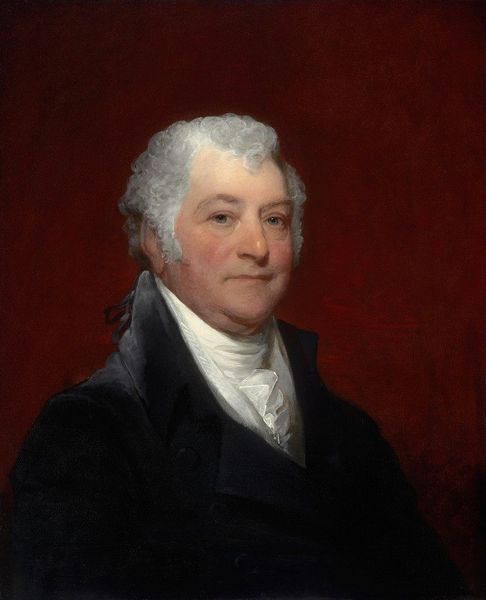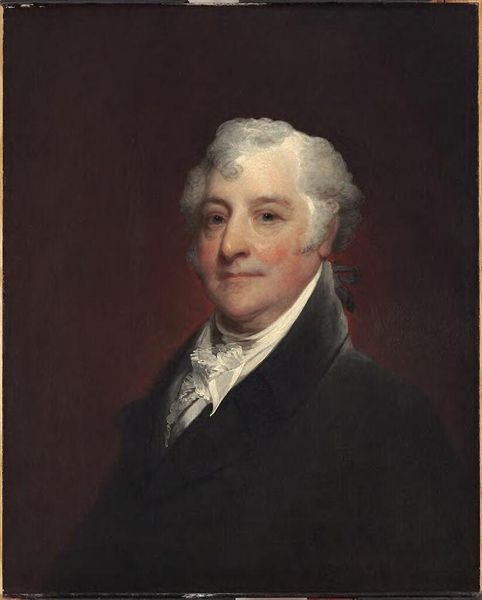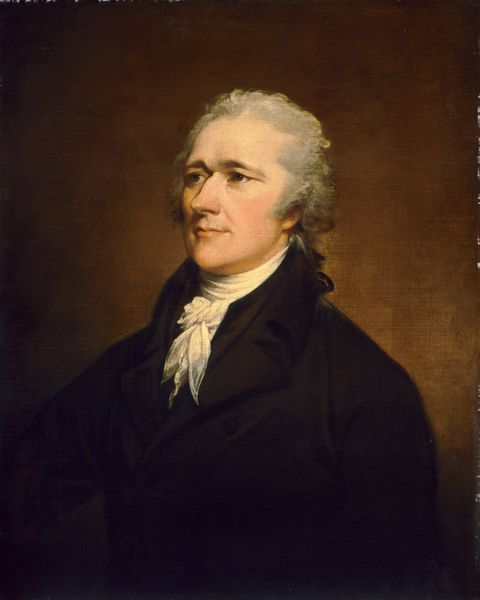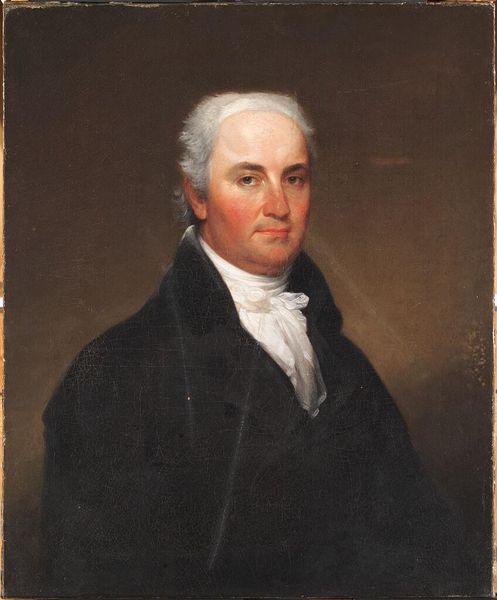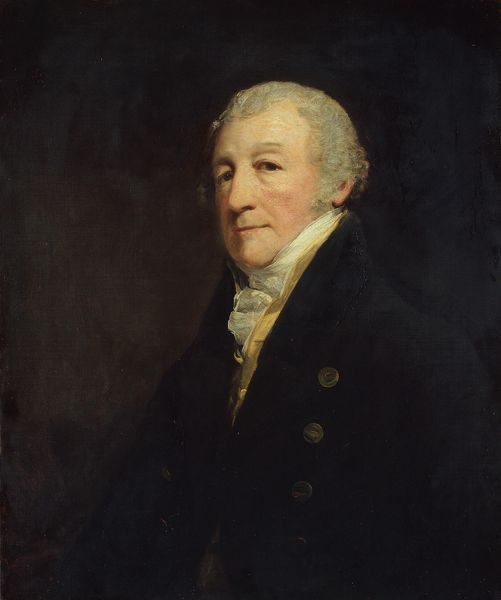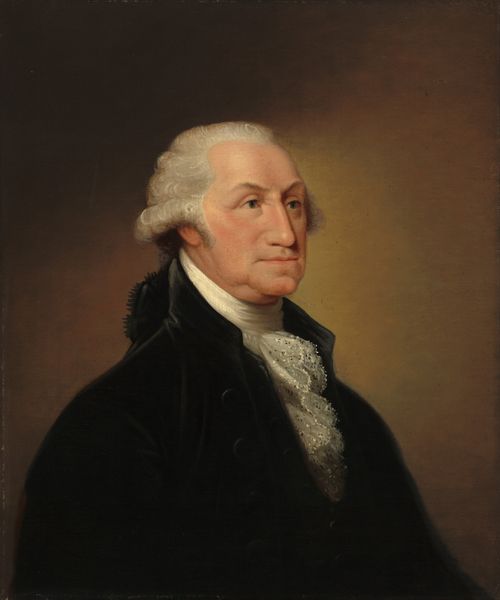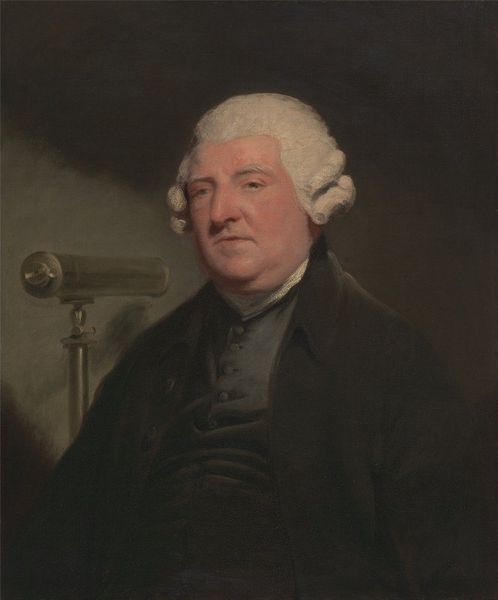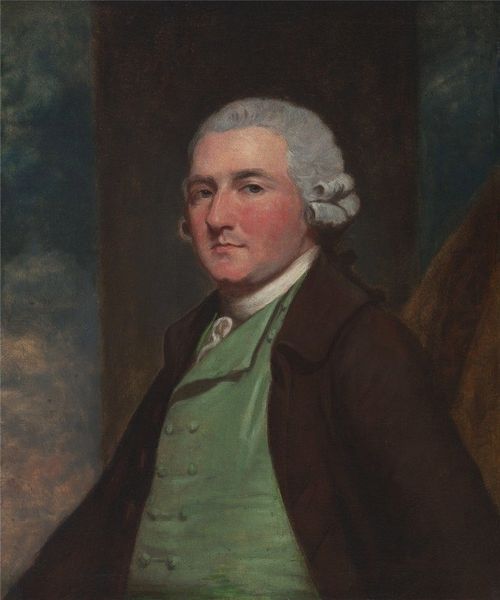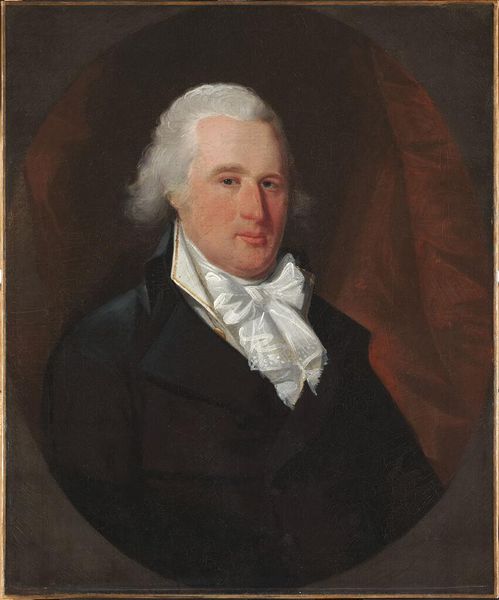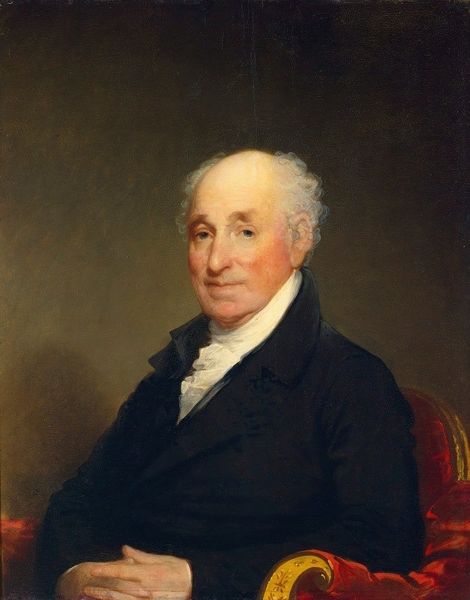
painting, oil-paint
#
portrait
#
portrait
#
painting
#
oil-paint
#
romanticism
#
academic-art
#
realism
Dimensions: overall: 76.5 x 63.8 cm (30 1/8 x 25 1/8 in.) framed: 91.1 x 78.1 x 6.4 cm (35 7/8 x 30 3/4 x 2 1/2 in.)
Copyright: National Gallery of Art: CC0 1.0
Editor: Here we have John Neagle's portrait of *The Reverend John Albert Ryan*, created sometime between 1825 and 1829, using oil paint. There’s something quite formal and almost austere about it. What do you make of this piece? Curator: What stands out to me immediately is the artist’s hand – the literal labor involved in the creation of this portrait. Think about the process of grinding pigments, preparing the canvas, and the deliberate, repetitive brushstrokes. Neagle wasn’t just representing Ryan; he was engaged in a craft, a form of skilled labor valued by a specific patron, with the exchange of labor creating an object representative of their economic transaction. Editor: That’s interesting! I was so focused on the subject, Reverend Ryan. How does that production process connect to his status as a religious figure? Curator: Consider the social context. Portraiture during this period was a status symbol, often commissioned by the rising middle class or elite. This wasn’t just about representing a man, but also solidifying his position and power within the community. The material value of the oil paint and canvas, and the investment made in Neagle’s skill, all speak to Ryan's respected position. Also notice the man's apparel; this quality cloth has been spun and processed, becoming a display of wealth which also required labor. The clothing also identifies his affiliation with a religion of significance. Do you see how the portrait highlights social structures? Editor: So, it’s not just about aesthetics, but about understanding the art object as a product of specific social and economic forces? Curator: Exactly. It urges us to think critically about the value we assign to art and how that value is intrinsically linked to production, consumption, and class. We might consider questions such as: Who was this art made *for*? Who had the economic privilege to support art like this? It changes our perspective on artistic creation. Editor: I’d never considered those elements within a painted portrait, it adds so much context to the subject of the painting and why the work was created! Thank you!
Comments
No comments
Be the first to comment and join the conversation on the ultimate creative platform.
